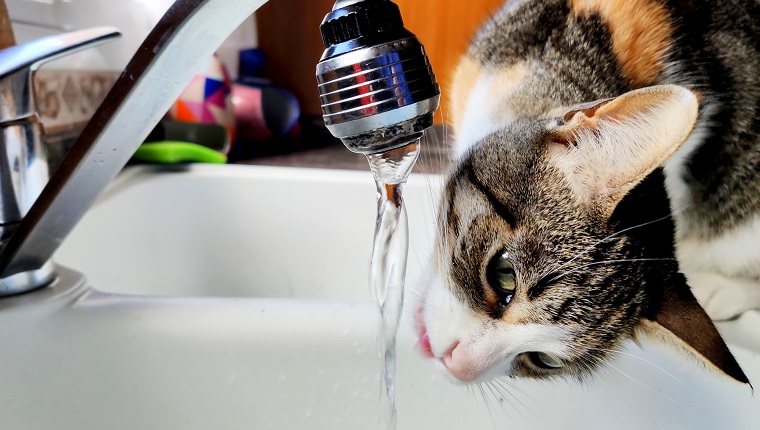Pet parents are always looking for ways to save money on their animals. Unfortunately, this also sometimes leads people to delay seeking medical care because they’re uncertain if a visit to the vet is absolutely necessary.
Most people know if a pet has collapsed, had a seizure, is bleeding, bloated, unable to walk, or has been injured, they should see their veterinarian quickly. But what about other, more subtle symptoms? When should you absolutely, positively take your cat to the veterinarian?
Here are examples of some common clinical signs that you should never ignore in your cat.
1. Difficulty Breathing
Any changes in your cat’s breathing need to be addressed immediately. Because cats have small respiratory tracts, even seemingly minor breathing issues can quickly lead to life-threatening situations.
If your cat is coughing, panting more than normal, fatigues easily, or suddenly has loud or noisy breathing, then they should be examined by your veterinarian immediately.
Heart and lung disease, infections, obstructions, and more can cause sudden breathing problems.
2. Diarrhea

Diarrhea that persists for more than a day should always be addressed.
Because cats are smaller than humans, they can become dehydrated more quickly than we do. Additionally, no one likes to clean soiled carpets and bedding!
If your cat has loose stools that last longer than a day, do your cat and yourself a favor and have them checked out.
Most pets can receive simple treatments that will leave them feeling better in no time.
3. Vomiting
Vomiting once after eating garbage is expected. But vomiting three or more times in a day is concerning, and vomiting three or more times in an hour may be an emergency.
Generally speaking, if your cat vomits more than three times in day, they should see your veterinarian. There are numerous causes of vomiting in cats; fortunately, most of them are non-life-threatening.
Don’t take a chance when your cat could be suffering from an intestinal obstruction, infection, pancreatitis, liver or kidney disease, hormonal imbalance, or worse.
The sooner your cat is diagnosed and treated, the better — and less costly — the treatment will be.
4. Sudden Increase In Water Consumption Or Urination

Changes in thirst and urination can be challenging to identify in cats.
If you suddenly observe your cat constantly at their water bowl or using the litter box more frequently, then you should take your cat to the vet.
These clinical signs may be associated with diabetes, kidney or liver disease, kidney or bladder infections, poisoning, hormonal diseases, and more.
5. Not Eating For 48 Hours
A pet’s appetite is preserved unless there’s something seriously wrong. When a cat doesn’t eat for two consecutive days, you should be worried.
By delaying treatment, your pet experiences further nutritional deficiencies that may prolong or complicate their recovery. Cats, especially those who are overweight and don’t eat, may also develop acute, life-threatening liver failure.
Take your cat’s lack of appetite very seriously, and seek medical attention as soon as possible.
6. Dark Or Bloody Stools

Dark, black, or tar-like stools are often associated with digested blood in the feces. Bright red blood often accompanies colitis or anal gland conditions.
Either way, you should have your cat checked out when you see changes in their feces.
Bleeding ulcers, intestinal parasites, foreign objects, and more can cause dark or bloody stools and should be treated as quickly as possible.
7. Inability To Defecate Or Urinate
A pet who’s straining or unable to urinate or defecate is in immediate danger.
The risk of bladder or urethral rupture, kidney failure, blood poisoning, seizures, and even worse conditions is great, and your cat should have medical attention immediately.
Many cats start out straining to go to the bathroom only to suddenly develop complete blockage. Male cats are at particular risk for urethral or urinary obstructions.
While this is not a complete list of symptoms that require immediate medical condition, it is a “wish-list” many veterinarians wish their clients would heed. Too many pets suffer needlessly or must endure more involved treatments due to delayed treatment.
Use these seven symptoms as a guideline, and always err on the side of caution when dealing with your pet. They can’t tell us what’s wrong or how they feel. It’s up to us to be their guardians and pay close attention to the subtle signs they give us.
Do you take your cat to the vet when you notice something going wrong? What other symptoms do you watch out for in your cat? Let us know in the comments below!
Ernest E. Ward, Jr., DVM served as the owner and chief-of-staff of Seaside Animal Care — a nationally recognized award-winning small animal practice, the veterinarian for the Rachael Ray Show, and a spokesperson for Rachael’s Rescue. He has been featured on NBC Nightly News, Animal Planet, CNN, Animal Radio and numerous television and radio talk-shows around the country.









